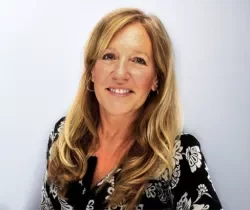Karin Roberts

Karin Roberts is the Director of Marketing for The Tradeshow Network Marketing Group, an exhibit house in Chicago supplying creative island booths, modular and custom rental displays, show services and trade show marketing.

A trade show display is a big investment and most businesses don’t want to just throw that money away. But sometimes the law of diminishing returns sets in. That $60,000 booth that made such a great impression 10 years ago may be giving off a bargain basement vibe today. It can be tough to know the best route to take. As a result, many companies just leave old exhibits sitting in storage, accruing storage charges without getting any benefit.
What can you do to make the most of your existing exhibit? First, ask yourself a few questions to evaluate the impression your exhibit is making.
· Is your exhibit keeping up with the latest trends?
According to Global Experience Specialists, one of the top trends in marketing at trade shows and other live events is fostering customer engagement in your brand. “Marketers across Corporate America continue to harness the incredible power of face-to-face marketing—using ‘brand experiences’ as a critical part of the modern era marketing mix. Event and trade show programs have become fully high-tech engagements that connect and engage—before, during and after an actual event or trade show. The result? Stronger marketing programs powered by stronger experiences,” GES states.
· Does your booth space invite people in or keep people out?
GES also notes that audiences are expecting more inviting and entertaining booth spaces from exhibitors. Your booth configuration should make people feel comfortable, not trapped, which requires open spaces and places for easy interaction.
· Does your exhibit reflect your current brand identity?
Even longstanding brands go through changes and updates. If you don’t think you can afford to replace your booth, you also can’t afford to send outdated marketing messages or make a poor impression on prospects. Of course, for companies that have been sold or have changed their names, a booth update is an absolute must.
Buying a brand new custom booth may be the best answer if your budget permits but it isn’t your only choice. Exhibitors can reap benefits from avoiding the costs of throwing the exhibit in the trash by choosing one of four upcycling options.
Upcycling is a big trend in home furnishings and décor – as people turn worn-out or dated furniture into fresh design statements. That same concept can apply to your trade show display.
Four upcycling options:
1. Trade in your old exhibit for a new exhibit and reap the savings.
If your exhibit is still in working order and structurally sound, you may be able to trade it in for a new exhibit from a trade show exhibit firm that offers trade-ins. Trading in your old exhibit can yield a significant discount on the cost of a new exhibit. Not only will it save on your budget, but it will also help save the planet through upcycling.
Of course, some exhibits have seen heavy duty and are just too worn to refurbish. Others are too big and heavy and would cost too much to ship in relation to the value of the trade-in or resale.
If the exhibit is in good condition, the exhibit firm may be able to offer a discount of as much as 10 to 20% off the purchase price of a new exhibit s of the same size or larger. Even pop-up exhibits are eligible for trade-in, if they can be refurbished.
2. Revamp your exhibit with new graphics and added elements to make it look like new.
Although a complete refurbishment of your booth may cost more than it is worth, revamping your exhibit properties may be an economical option. For example, you can have new graphic panels made and add new elements with custom or rental modules, such as lightweight banners or technology kiosks. An exhibit designer can advise you on options for revamping your exhibit.
3. Sell your booth to a local buyer.
Research of the resale market for exhibits has shown that a used display can sell for 10 to 40 percent of the original purchase price. The exact amount that your booth will fetch depends on its age, current condition, size, materials and the ability to reconfigure the components. Your accountant should be able to help estimate the depreciated value of the asset.
4. Donate it
If your booth is beyond its usefulness in an exhibit setting, you may find a local charity that would be happy to receive it as a donation and repurpose it. Local non-profit organizations can find creative ways to reuse the displays.
Do something!
Whatever upcycling option appeals to you, it is better to do something with your old booth than to do nothing. If you have the sneaking suspicion that your exhibit is outdated, the time has come to trade up.

Add new comment